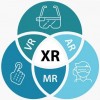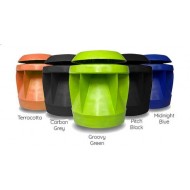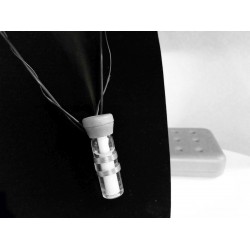
Медиа-лаборатория Массачусетского технологического института, основанная в 1985 году, является одной из ведущих мировых исследовательских и академических организаций. Не ограниченные традиционными дисциплинами, дизайнеры, инженеры, художники и ученые Media Lab стремятся создавать технологии и опыт, которые позволяют людям понимать и преобразовывать свою жизнь, сообщества и окружающую среду.
MIT Media Lab способствует развитию междисциплинарной исследовательской культуры, которая объединяет различные области интересов и исследований. Уникальная среди других лабораторий Массачусетского технологического института, Media Lab включает в себя как обширную исследовательскую программу, так и программу получения диплома в области медиаискусства и науки . Преподаватели, студенты и исследователи работают вместе над сотнями проектов в самых разных дисциплинах, таких как социальная робототехника, физические и когнитивные протезы, новые модели и инструменты для обучения, общинная биоинженерия и модели для устойчивых городов. Искусство, наука, дизайн и технологии сочетаются друг с другом в среде, созданной для сотрудничества и вдохновения.
Группа всемирно известных преподавателей и старших исследователей возглавляет исследовательскую и академическую программу лаборатории, работая с аспирантами, научным персоналом, приглашенными учеными, докторантами, преподавателями и сотрудниками. Кроме того, многие студенты MIT участвуют в исследовательских проектах в лаборатории в рамках программы Bubble Research Opportunities Programme MIT. Программа Lab и MAS возникла в Школе архитектуры и планирования Массачусетского технологического института (SA+P) и отчитывается перед ней, с которой они делят акцент на дизайне, практическом обучении, совместных исследованиях, а также критике и размышлениях.
Выпускники и исследователи Media Lab продолжают карьеру в исследовательских и академических кругах; стать предпринимателем; привнести свои уникальные навыки и идеи в промышленность; или стать независимыми дизайнерами, художниками, изобретателями и консультантами.
Исследования и проекты, разрабатываемые в Media Lab, также часто развиваются и развиваются из лаборатории: как дочерние компании, как выставки и перформансы, как передача технологий компаниям-членам и, что, возможно, наиболее важно, как основа для непрерывных исследований и исследований для другие, как в лаборатории, так и по всему миру.






















